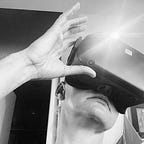How VR Can Root Out Bad Managers
Here is a short list of things corporate bosses and managers have done to me:
Screamed at me in the middle of a newsroom
Thrown a Blackberry at me (and no, I did not work for Naomi Campbell)
Yelled at me because we weren’t covering a story, when the link to the story we “weren’t covering” she sent me came from our own publication
All manner of sexual harassment, from the overt questions about my personal life to subtle microaggressions
And so on, and so on.
Now, these various awful bosses have all continued to fail upwards, and pull the same types of things. And the same cycle continues — mass departures of those they supervise, reduced productivity, low morale, and probably the occasional lawsuit or bad press.
Here’s the thing: there’s no real test for good management. Plenty of these people can put on a good show in an interview, or find members of their professional cohort to say a few nice things about them. Once you have a few gigs under your belt, in many industries, you basically have to kill someone in order to be exiled. And short of murder, you can just hang out, go silent for a bit, mutter an apology, and then be back in the game.
But now technology allows us a way to test whether someone has the fundamental skills to manage others. By using VR simulations, where the applicant has to handle different scenarios and choose the best answers, hiring managers can see whether someone can effectively lead a team, or whether they’ve just floated from one role to another based on charm and connections.
Obviously, the VR pieces have to be scripted with subtlety — even the most rage-prone manager will know not to choose the option where you berate your assistant for getting your coffee order wrong. But if an employee comes to you with a concern, whether you choose to dismiss it out of hand versus hearing them out and at least acknowledging the concern is something that can be tricky — and a good, nuanced VR training piece will pick up on this.
VR simulations shouldn’t just be a job screening tool, although that is one strong use case. If someone has designs on moving into management, they should be able to go through simulations early and often, with a mentor helping to guide them through the process. These types of simulations can also help flag potentially strong candidates who might be outside the usual talent pool for any number of reasons but have the emotional intelligence and empathy to develop into great leaders.
Lots of companies have made noises about “inclusive leadership” but stopped short of actually doing anything about it. All the D&I teams in the world can’t do anything if the management class is full of people who lack basic people skills and drive talent away. VR has already proven incredibly effective in curbing employee turnover — one piece we built led to churn falling from 50% to 19%, saving millions of dollars. It’s easy to imagine a training piece for managers that leads to similar outcomes and a better workplace for everyone.
